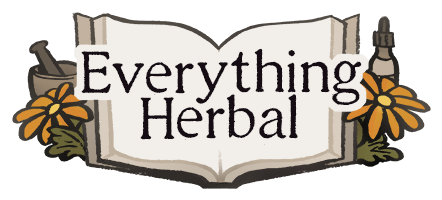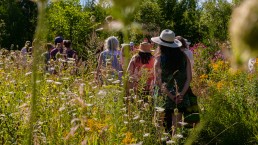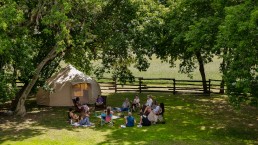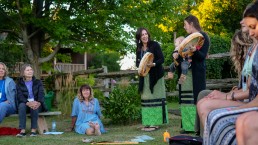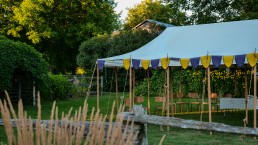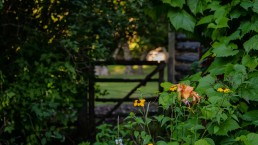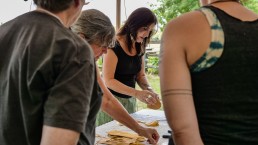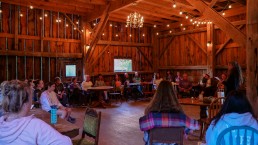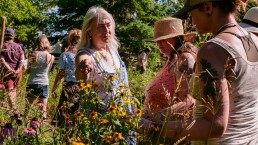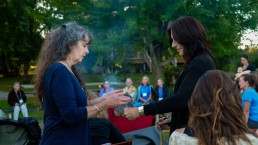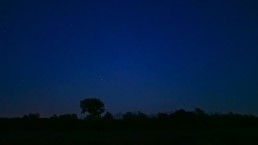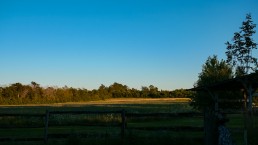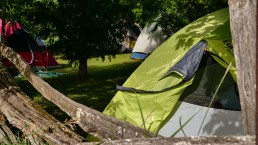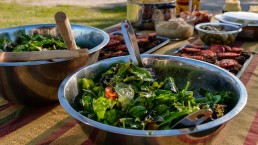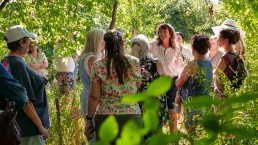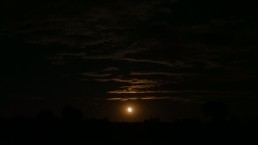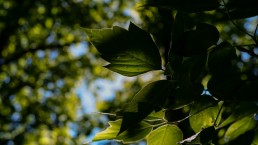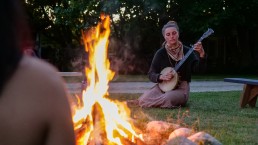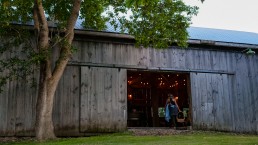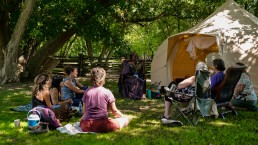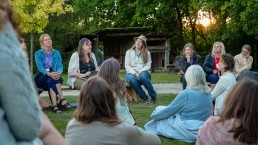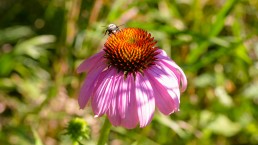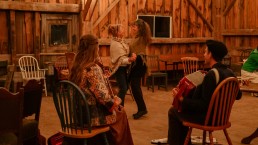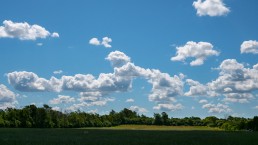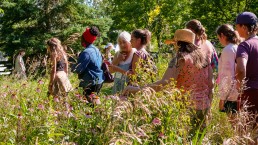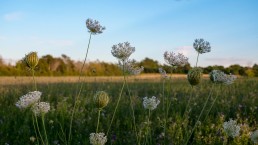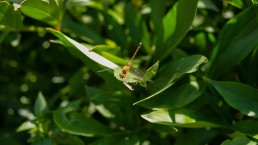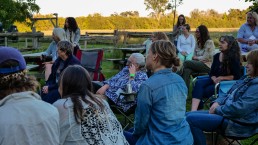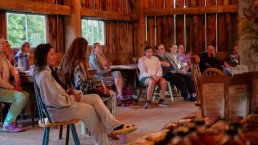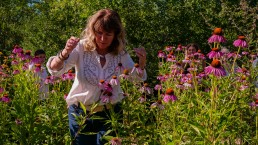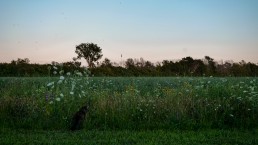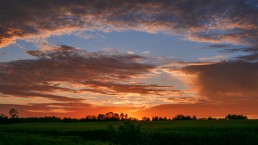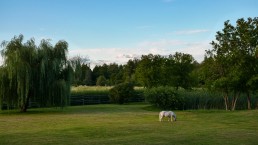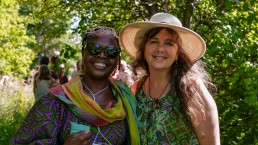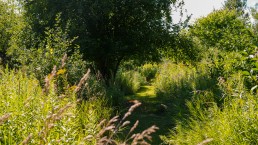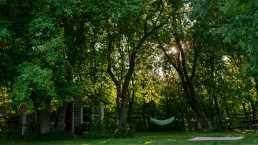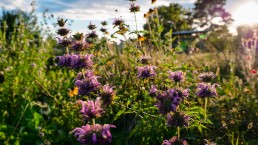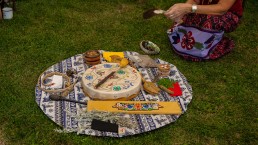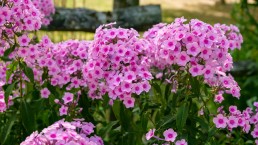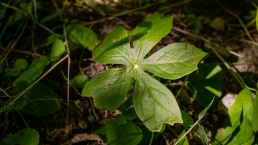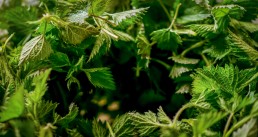Lady Slipper: A Gathering of Women and Plants
A Magical August Weekend…
So often we think of plant medicine as medicine for fixing and working on ourselves! But at Lady Slipper, the plants offered the medicine of connection, acceptance and appreciation.
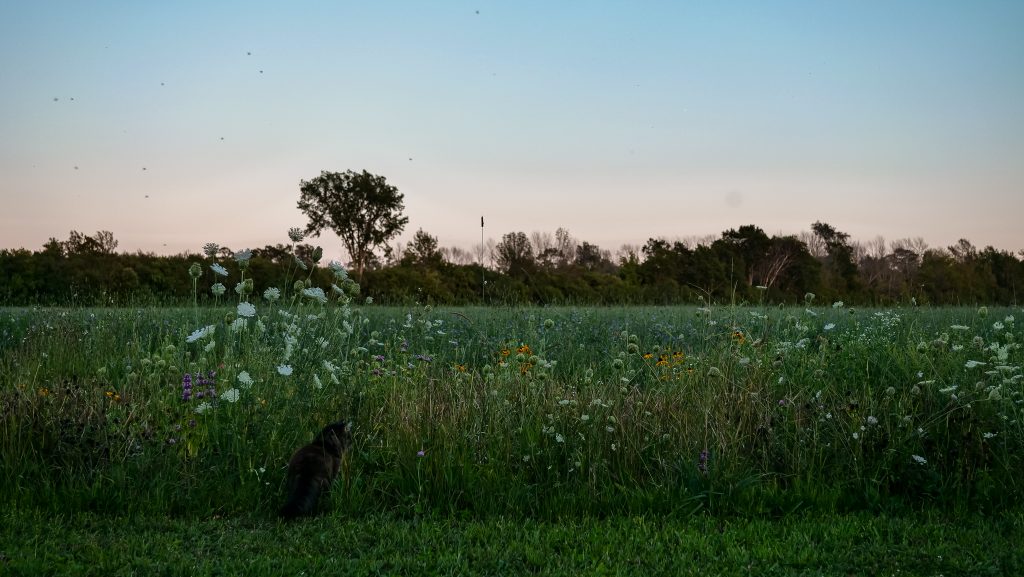
It was a beautiful weekend. The days were warm and sunny with a caressing breeze. The nights were bathed in the light of the waxing moon. The women came together to sing, laugh, share wisdom their bodies, plants and their hearts carry. The plants rejoiced in being seen and honoured. The food was delicious and nourishing. It was a beautiful weekend.
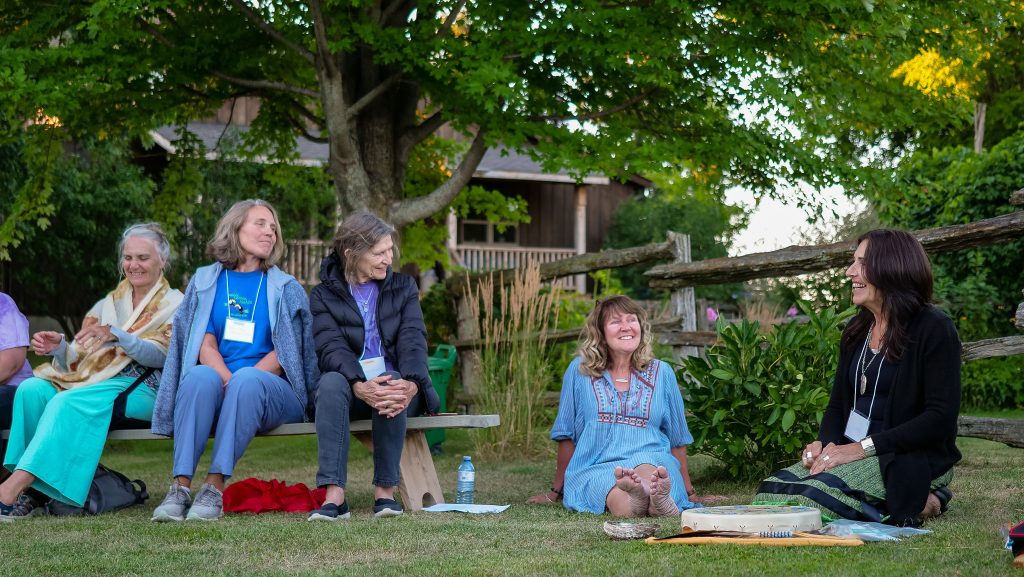
A gathering of women is a special time. It is a time to become more than a mother, wife, daughter, sister. It is a time to walk with the unique beauty each woman brings to the world. It is a time to swear like women swear, weep like women weep and talk like women talk. There was lots of talking and listening.
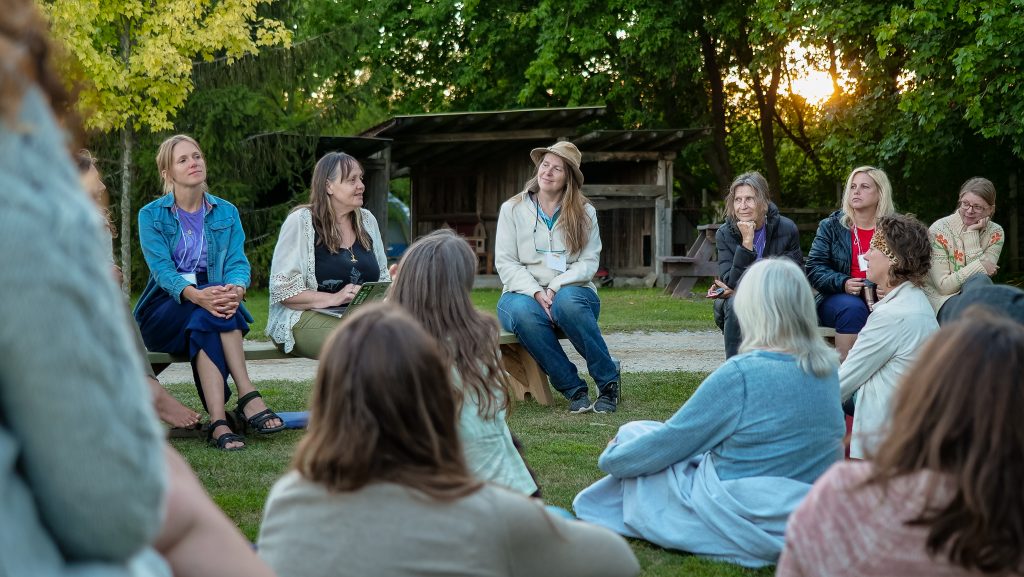
I remember walking by a picnic table where a group of women sat and overheard Laura Gilmore, a woman comfortable in the wilderness of the forest, explain how wolves move through the wilderness and porcupines perch in trees with their back to the world. The women at the table listened intently absorbing the knowledge of wild things.
Then there was Christine Denis’ erotic monograph of the Lady Slipper. With the lights twinkling behind her, Christine reclaimed dirty words used to describe female genitalia. In reclaiming these words, Christine banished the shame each women has been made to feel and returned the power and beauty of the female anatomy.

Penny Beaudrow in the meantime, created a safe place for women to connect with the earth. Laying on the ground, each women opened her heart to abundance of life with all its gifts and trials.

Lauri Hoeg offered each women an opportunity to name the medicine they are gifted. She showed them how to make a small pouch to help them remember the medicine they carry.
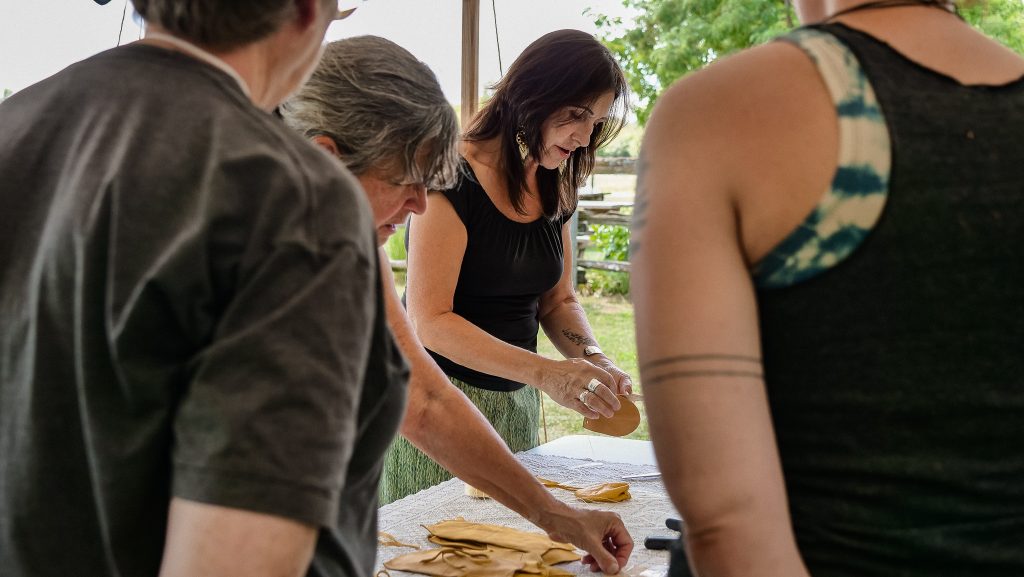
Mama, unfortunately I was not able to sit with her during her sharing. But, all weekend long we felt Mama’s joy and support. The open acceptance and interest in others was a palpable experience throughout the weekend.
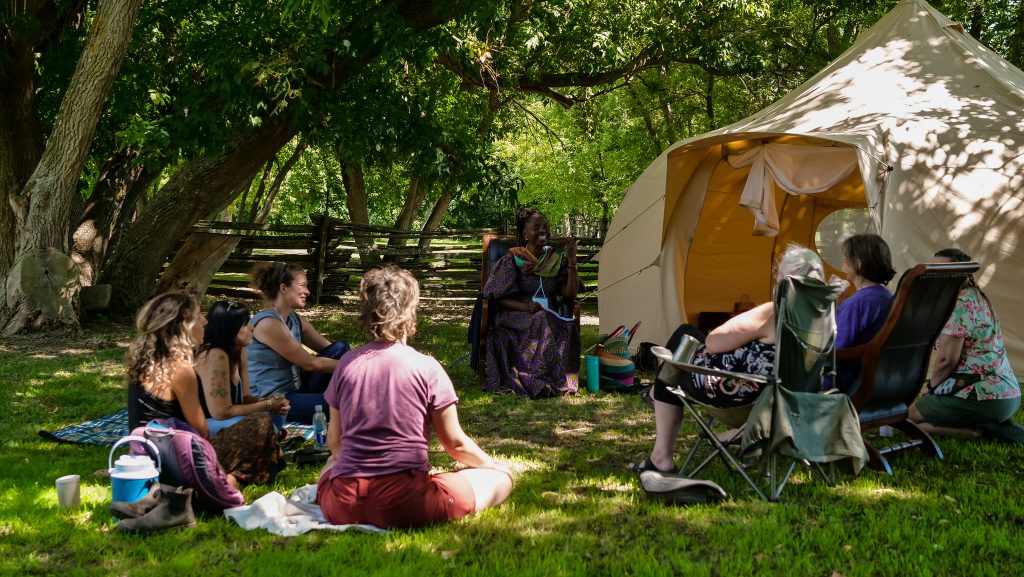
Dayna carried us through the weekend with her beautiful music, and in the background our volunteers, Evelyn, Chelsea, Candice, Charlee, Serena, Red, Debbie and the talented hair braider Rachel, tended to all that needed to be done. Without their efforts, Lady Slipper would not have seemed so easeful and carefree.

Penny and I want to thank all the women who came and helped make Lady Slipper the beautiful weekend it was. Your smiles, laughter, interest in plants and kind words, brought the true medicine to the gathering. Again, thank you.
Yours, Abrah
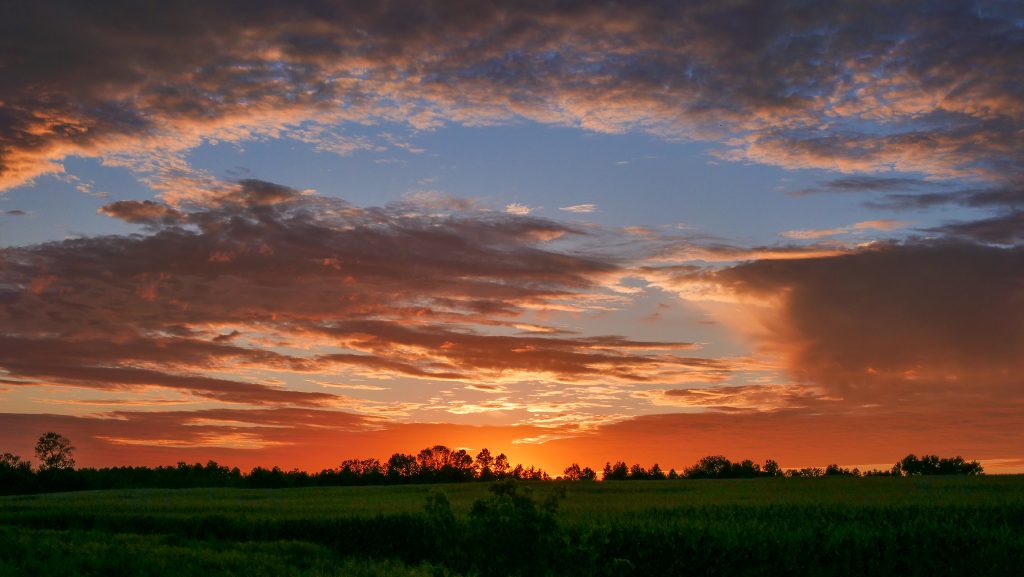
Photos by Serena Mor
Nettle Seed
Nettle Seed
(Urtica dioica semen)
Etymology
- urtica from the Latin “urere” meaning to burn
- dioica from Latin for “two houses” – this refers to male and female flowers occurring on separate plants.
- Nettle from the Anglo-Saxon word “noedl” meaning “needle”.
In contemporary western herbal medicine, nettle seed is essentially an energizing trophorestorative for the kidneys. Some herbalists also refer to nettle seed as an adaptogen.
Historical Uses
Let’s begin with historical uses.
First Historical use of Nettle Seed:
Nettle seed was part of the feed given to horses that were much loved. It made their coats shiny and they appeared to have more vigor.
This is important because the coat of an animal, or the hair of a human, will tell you a lot about the health of the body from which it sprouts. Hair that lacks lustre and fullness, unless there is male pattern baldness (androgenic alopecia) which is hereditary, suggests the body lacks the nutrients it needs. The body will sacrifice the hair in order to conserve nutrients needed for more necessary functions. If malnutrition is prolonged, changes can also be seen on the nails and skin.
So, we know from those who fed their beloved horses nettle seeds had healthier animals with sustained vigor. We can hypothesize this is because of the nutrients in the seed.
Second Historical non-use of Nettle Seed
Monks during the middle ages, 500 CE to about 1500 CE, were forbidden to take nettle seeds. It was considered an aphrodisiac. They were given Vitex agnus castus seeds instead. This plant suppresses libido in men.
We now know that Nettle seeds awakens the sexual appetite in men. A vigorous sexual appetite suggests gusto for life. This suggests the Nettle seed in some way nourishes the endocrine system. The endocrine system is responsible for survival of the species. It does this by releasing hormones that govern of many of life’s survival actions including inflammation and fever as well as fight, flight and freeze and sex. Sex being essential for the survival of the species.
Nettle Seed, as do most seeds, are high in essential fatty acids. These oils are necessary for a healthy functioning endocrine system which includes both sexual and immune health.
Third Historical use of Nettle Seed
Culpepper, an English herbalist from in the mid 1600s, had many uses for Nettle Seed. From Culpepper’s Complete Herbal…..
The seed provokes urine, and expels the gravel and stone in the reins or bladder, often proved to be effectual in many that have taken it. The same kills the worms in children, eases pains in the sides, and dissolves the windiness in the spleen, as also in the body, although others think it only powerful to provoke venery… The seed being drank, is a remedy against the stinging of venomous creatures, the biting of mad dogs, the poisonous qualities of Hemlock, Henbane, Nightshade, Mandrake, or other such like herbs that stupify or dull the senses; as also the lethargy, especially to use it outwardly, to rub the forehead or temples in the lethargy, and the places stung or bitten with beasts, with a little salt.
From Culpepper we learn about Nettle seed’s direct actions on the kidney. Remember contemporary herbalists now most commonly use it as a kidney trophorestorative. Culpepper tells us it removes kidney stones.
He also suggests it has anti-parasitic actions as well as anti-viral actions. Rabies is a viral infection. This is very interesting to me as I see a lot of infections in my practice and we are currently living with a virus that is changing all our lives.
What Else Can Nettles do for Us?
Constituents of Nettle – not necessarily the seed as most research is done on the leaf – is demonstrating anti-viral activity. For further reading, you can check out this link [here].
One of the primary finding’s researchers noticed when offering nettles as medicine, is the lack of weight loss and vitality when mice were injected with a killing virus. This refers back to those who love horses already knew: Nettles are a super food! And Nettle seed is a super, super food!
The Kidney
Herbal Medicine is the relationship between plants and the body/mind complex. To understand a plant’s medicine, one needs some understanding of the organ or system that the plant effects.
The kidneys are mentioned 5 times in the Hebrew Bible as the organ as God examines to pass judgement on the soul. It is said, Abraham learned the laws of God from dreams offered by his kidneys at night.
“I will bless the Lord, who has given me counsel; my reins also instruct me in the night seasons” (Psalms 16:7).
The ancient Jewish sacred text the Talmudic corpus teaches that one kidney offers good advice, while the other offers bad advice.
In Traditional Chinese Medicine, it is often said that the kidney is where fear resides in the body. The word for fear in Mandarin is Haipa. Haipa is broken into two pictograms; “Hai” which is translated as harm, evil, kill and calamity, and “Pa” which translates into afraid, fear and dread.
Translations of Haipa are; to be scared, to dread, to lose courage, to be unable to endure and to worry.
I find these considerations of the “emotionality” (for lack of better word) of the kidney’s important when we are speaking of Nettle Seed as a kidney trophorestorive. If we consider these ancient understanding of kidneys – a kidney trophorestorative is a plant that restores the courage, resiliency and the power to stand in our creative goodness.
This brings us to the adoptogenic effect of a kidney restorative. Adaptogenic herbs act on the adrenal glands to moderate the body/mind’s response to stress.
Stress is such an overused word today that it has almost lost its significance. “We are all stressed out!” Think of stress as the loss of courage, coming from the French word for a “good heart.” When we lose the good heart of courage, we begin to worry. The worry spirals into fear and soon we are waking every morning with dread in our bellies.
Nettle seed restores the courage to the heart by easing the worry from the kidneys.
A More Physiological Understanding of the Kidney.
The kidney controls the tension or relaxation in the heart and all the blood vessels and therefore the delivery of blood carrying nutrients and oxygen to the rest of the body – including the brain. Relaxed, but not too relaxed, circulation means every cell in the body receives the nutrients it needs to be vibrant and healthy. Tension in the kidney has a influence on every cell in the body. Worry creates tension!
The kidney also filters blood. In a cadaver antonym class, squeeze a kidney and it’s like a sponge releasing fluid. The kidney filters the by-products of metabolism, particularly protein metabolism and maintains electrolyte balance. If the kidneys are hindered in their ability to filter the by-products of metabolism, the skin takes on the role. This is why people on dialysis often have the smell of urea coming from skin. Their skin is doing the work on the kidney (back to those horses).
Electrolytes balance the fluid levels in your blood plasma, interstitial tissue and within your cells. Electrolytes maintain the pH balance of your body and enable the contraction of your muscles including your heart and arteries and participate in transmission of nerve signals.
Your kidney’s actions touch every part of your body and can have a profound impact on your mental well being as well. When you take a kidney trophorestorative, you are supporting not just your kidneys but your whole body.
Signs and Symptoms That it’s Time to Take Nettle Seed
- Mid and low back ache when standing. It feels like fatigue in your back. (This, for me, is the key indication that Nettle seed is needed.)
- Dread and fatigue in the morning upon waking. This fatigue can pause once you up and getting on with your day, or it may remain if it has moved deeper into your beingness.
- Aching legs worse with cold.
- Water retention, swollen tongue.
- Low libido.
- Sighing.
When Not to Take Nettle Seed?
- When someone is completely depleted. Nettle seed carries a lot of energy. If someone does not have inner reserves, you may want to begin with Nettle leaf and as the person re-energizes introduce Nettle Seed.
Dosing
Start low and go slow. It is very invigorating and can interrupt a delicate sleep pattern if take too late in the day.
More recourses on Nettle Seed:
- https://www.researchgate.net/publication/242275567_Urtica_semen_reduces_serum_creatinine_levels – Johnathan Treasure’s research into Nettle Seed credited with awakening the current interest in the plant.
- http://ravensongseeds.com/blog-post/nettle-seed-season – This is a fantastic article with harvesting tips and recipes and much more.
- https://napiers.net/blogs/news/nettle-seed-uses – Some curious clinical applications of the Nettle seeds. One needs to check the resources though.
